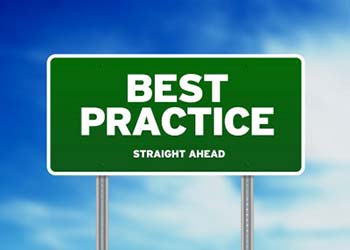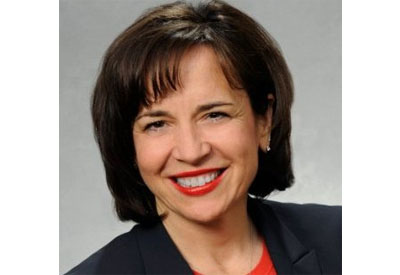10 Channel Dynamics as Turning the Page into 2019

Jan 11, 2019
By David Gordon
As we turn the page into 2019, welcome to new opportunities, new challenges, new initiatives and perhaps some new ways of doing business or serving your customers to ensure a record 2019… whatever your goals may be.
While we thought about making predictions, we decided to leave those to others and share some channel dynamics that we’ve been observing that we feel are significantly impacting the electrical distribution channel.
These include:
1. Whose brand is valuable?
In an age of eCommerce, price comparisons, channel convergence and fragmentation, as well as sourcing and more, whose brand is important to customers, and why? Does the manufacturer brand matter to the end-user? To the contractor? To the electrician in the field? To the distributor principal? To their salespeople? Or does the distributor brand matter to a contractor? To their staff? To maintenance staff or engineers? Understanding and “living” your value proposition as well as adequately funding the communication of it will be critical to revenue goal achievement moving forward… and if you don’t, prepare to compete on price and defer margin growth.
2. Size matters
Size influences strategy. It impacts the ability to negotiate (leverage). It determines the flexibility to spend on people, technology, training, infrastructure, and more. But it doesn’t mean that “small(er)” can’t compete. Fitting your strategy and execution abilities into your resources can require creativity. Much depends on “what do you want to be?”
3. Manufacturers support channels, but you?
Manufacturers are supporting more sales and distribution channels than ever before in the pursuit of sales growth. They consider where is the customer buying and then have a fiduciary responsibility to consider being available to wherever the end-customer decides to purchase. At the same time, more distributors (in other channels) seek to identify how to increase their share of spend of their customers, hence they diversify their product offerings (especially those serving industrial and MRO environments). And they support many electrical distributors in your marketplace (in most cases). So the question becomes, why should they support you? What is your value proposition to them that justifies why they/their sales force should support you disproportionately? Or perhaps you don’t really need additional or incremental support from them other than access to material at a competitive price? Manufacturers will chase revenue; distributors should consider their needs beyond material.
4. Products or customer? What do you sell? What is your focus?
Many companies in the pursuit of “sell something” become product focused and consider that every account has opportunities. And, quite honestly, there are companies who produce or source products with the sole strategy being “sell to earn share (sales) at distribution.” These companies are affectionately called commodities… their products are interchangeable with competitors; they compete on price, ease of doing business or relationships; and are challenged with thinking of, or spending money on, marketing and creating demand. A few live on their brand legacy. And then there are companies that consider who their customer is and seek to develop products and offerings and then create a reason for customers to want to prefer, or purchase, their products. Some are successful, many are “talk.” Distributors also have the same challenge and differentiators become their ability or willingness to market (to differentiate themselves as well as their suppliers or offerings), the various services they offer (value-added, fee-based and expected) and the quality of their sales resources. Both parties should evaluate themselves as well as their customers and suppliers… and a healthy mix, by market, of product-focused and customer-focused suppliers and distributors is needed. The questions become, “What do you want to be (and then, are you willing to resource/manage it?)” and “What is your partner?”
5. Reaching/driving influencers
This is about demand generation. Who is responsible for creating preference for a product as well as for where the product is purchased. Manufacturer? Distributor? Marketing? Sales? And then the more challenging question of “How”? Consummating the order isn’t too difficult. The customer knows where the product can be procured and has their decision criteria. They can call, fax, email, visit a branch or order online. The key questions are what to order and why order from you. Manufacturers, are you investing to influence or leaving it to a distributor to sell? To accept an order (or “pull you from the shelf”)? Distributors, are you dependent on your sales organization to wait for “your” contractor to place the order with you? How you consider this can impact 2019 and beyond sales.
6. Digital divide from the top, through the channel
Much talk, growing investment in eCommerce as well as the broader eBusiness arena. In discussions with manufacturers we’re seeing more considering strategies (sometimes pilot initiatives) with distributors on targeted eBusiness / eCommerce initiatives. Creativity counts here, and manufacturers are testing models to determine how they can differentiate (partner?) with distributors. Adoption of “e” as an organizational mindset as well as a sales/marketing imperative may create more of a distribution divide than solely revenues. Ability to share ideas with senior manufacturing management can be key to gaining visibility… and then sharing results. The creative or open-minded can wind as manufacturers seek differentiation and revenue.
7. Defining service(s)
Distributors, and some manufacturers, offer many services. Unfortunately, they’ve done a poor job of cataloguing their services, and determining what is chargeable and what should be communicated. Every distributor can outperform Amazon, and for free, but customers take it for granted. Few charge for services due to sales conviction and defined pricing models. Some are changing this. Some have unrealistic goals of services being 10-25% of sales (feasible in rare cases). Distribution can compete with eCommerce players for many reasons, but defining your services leads to differentiation… for distributors and manufacturers (as, if manufacturers don’t determine “why them”, then share will continue to shift to lower priced manufacturers as most products are commodities).
8. Easy to do business with… more than omnichannel
There are many choices within the market… for anything. A key differentiator for customers is who is easier to do business with, especially if all else is equally or relatively equal. So, the question is, “How easy are you to do business with?” Ask your salespeople 1) how they view your company, and 2) how they think their customers view the company. And then ask your customers. Take away unnecessary barriers, become easier, and communicate the differences. Companies who achieve this gain customer preference, loyalty and advocacy.
9. Metric management
With growth tightening and gross margins eroding, metric management is becoming more important. As a friend once said, “People respect what is inspected.” Scorecards are nice but you need the right KPIs to drive each department and your company. Not too many so that they become watered down and your staff/salespeople become confused and therefore indifferent. Every department/role can be measured. Identify what are the keys to each area’s success to drive performance… and the performance of your trading partners. Metrics can drive sales and profits. Consider the steps to success, not solely the end goal.
10. Sales management drives culture
For distributors, sales (and hence salespeople) have been the thing. Many aspired to be in these roles as they are the marquee roles — the people who are respected, listened to or have the ability to break the rules. In essence, your sales organization and your sales management team, as well as the drive for sales, have defined the culture of most distributorships. While this can infer “customer focused”, the question becomes, “is the culture of yesteryear the culture you want to evolve to for tomorrow?” There may be elements to retain, perhaps many qualities should be timeliness, but people change, companies change and business models are unfolding that may make you consider a more inclusive approach. A culture to follow sales or a culture to generate sales?
And some marketing concepts that we believe will enable companies to accelerate growth:
• Distributors who offer frequent buyer, loyalty, or customer retention programs and evolve these programs into value-based initiatives will outperform those who think that offering points solely for merchandise makes a difference.
• Customer and contact segmentation and messaging will add value.
• Integrative messaging adds value. Not everyone wants or reads everything on email. Breaking through the clutter is important.
• CRM is gaining adoption as companies recognize that they need more contacts per account.
• Sales is a team sport… but many salespeople haven’t realized this. As this cultural evolution occurs, compensation models will evolve (starting with new hires as well as new or enhanced sales models). eCommerce is only a minor element of this. Changing customer behaviours as well as generational issues, employment longevity, product training and more are redefining sales models.
• Distributors need at least 3 levels of marketing interaction: key customers, growers who are underperforming assigned accounts and “overachieving” unassigned accounts, and branding and differentiation initiatives
• Develop exception marketing reporting tools
• Implementation of eCommerce / eMarketing initiatives that not only serve existing accounts and be of service to those who are “disconnected” from your company but companies with creative eCommerce staff can create alternative channels if their company is strong operationally.
Just some thoughts to stimulate discussion to get your year started. Perhaps for your management meetings; perhaps topics for your sales meetings.
What are you seeing as additional channel dynamics (beyond product-driven issues) that will impact your 2019?
David Gordon is President of Channel Marketing Group. Channel Marketing Group develops market share and growth strategies for manufacturers and distributors and develops market research. CMG’s specialty is the electrical industry. He also authors an electrical industry blog, www.electricaltrends.com. He can be reached at 919-488-8635 or dgordon@channelmkt.com.










